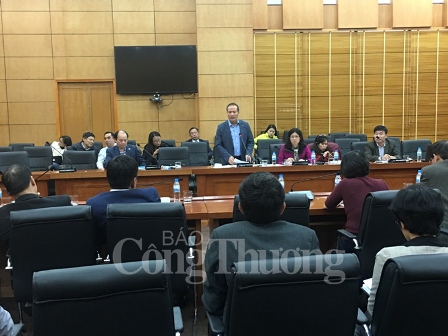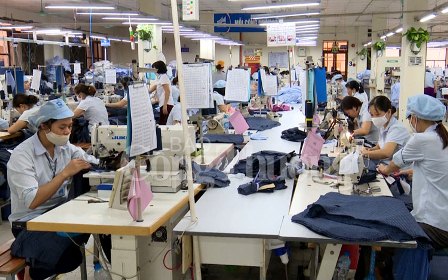


Textile and Garment Planning- Towards Core Values
12-12-2017
On December 8, in Hanoi, the Ministry of Industry and Trade held a workshop to collect comments on the draft of the project "Adjustment planning development of Vietnam textile industry to 2025, vision to 2035 " Attending the conference were representatives of Ministries, branches and Departments of Industry and Trade in some provinces and cities in the North.

Deputy Minister of Industry and Trade Cao Quoc Hung addressed the conference
At the seminar, Deputy Minister of Industry and Trade Cao Quoc Hung emphasized that textile and garment is one of the key export sectors, contributing about 16% of the country's export share. Social security, job creation for many workers in rural and mountainous areas. However, the textile and garment industry is developing unevenly, the capital source is the stage to bring high value surplus has not yet developed downstream. Therefore, it is necessary to consider and adjust in order to find suitable and stable development directions for the textile and garment industry in the coming time, especially in the context of Vietnam's deep integration and integration. Development opportunities are great.
According to the draft plan, the Vietnam Textile and Garment industry aims to reach 3,000 thousand tons of fiber by 2020, 3,700 thousand tons in 2025, 5000 tons in 2035; about 2,200 thousand tons, 3,500 thousand tons, 4,700 thousand tons; About 6,000 million products, 8,000 million products and 10,000 million products. In the coming period, the textile and garment industry is forecasted to encounter many difficulties in labor and cheap labor is no longer an advantage so export will slow down. In the period 2015-2025, the industry has produced some kinds of raw materials.
Commenting on the conference, Nguyen Van Tuan - President of the Vietnam Cotton Association said: "The world's demand for textiles and garments is increasing, 2-3% annually. Production capacity is mostly concentrated in Asia, including Vietnam, China ... and South Asia, including India and Bangladesh. These two regions account for 8% of textile production capacity. global sewing. In recent years, China has tended to reduce production in labor-intensive industries, pushing production to other countries, including Vietnam, so the opportunities for textile and apparel industry are huge. . However, to take advantage of this opportunity, the textile industry needs a long-term orientation plan, which focuses on removing bottlenecks and moving towards core values. Specifically, the sector needs to invest in the development of dyeing and dyeing to meet the demand for domestic fabrics and at the same time to increase the added value of goods and contribute to the development of the design.
Mr. Than Duc Viet - Deputy General Director of Garment Corporation 10 - Joint Stock Company also said: The garment industry is currently competing for great labor. Not only short-term workers are short-term but short-term training courses are difficult for colleges and universities. Therefore, new planning should provide effective solutions to remove this knot.
 ​
​
According to the opinions of many delegates, the development plan of the textile and garment industry in the coming period does not necessarily have to invest in all sub-sectors, giving priority to the strengths and bring value. higher. The state attracts investment in production by chain, diversifying its export markets in order to deepen its involvement in global supply chains and avoid the risk of dependency and some markets. The planning also includes an assessment of consumer trends that shape the structure of each product category.
In terms of capital, the plan should not only encourage commercial banks to lend to textile and garment enterprises but expand their scope to credit institutions in order to increase their borrowing capacity.
According to Baocongthuong.com.vn